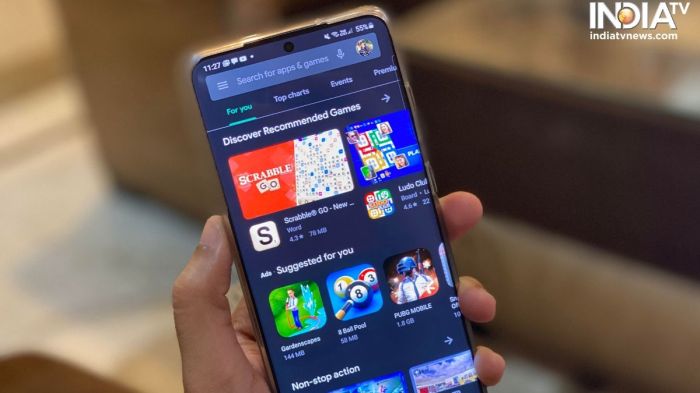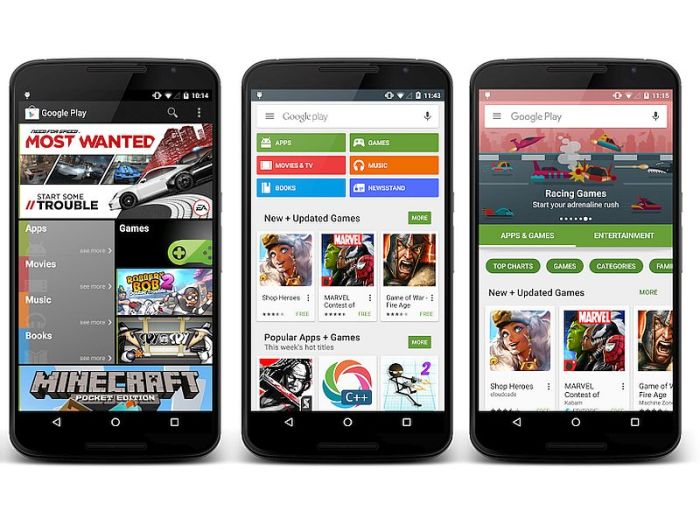The Evolution of Family-Friendly Apps
The Google Play Store has become a digital playground for families, offering a vast library of apps designed to entertain, educate, and engage children of all ages. The journey of family-friendly apps on the Play Store has been marked by significant evolution, reflecting the changing needs and preferences of families and the advancements in technology.
From simple educational games to immersive augmented reality experiences, family-friendly apps have come a long way. Early apps were often basic, focusing on core learning concepts or simple entertainment. Today, however, families have access to a wide array of sophisticated apps that cater to diverse interests and learning styles.
The Rise of Interactive Learning
The early days of family-friendly apps were dominated by educational games that focused on basic skills like alphabet recognition, counting, and simple puzzles. While these apps served a purpose, they often lacked the interactivity and engaging elements that could truly captivate children.
Today, interactive learning apps have taken center stage. These apps leverage technology to create immersive and engaging experiences that make learning fun. For example, apps like “Khan Academy Kids” offer a gamified approach to learning, incorporating interactive activities, animations, and storytelling to make educational concepts more accessible and enjoyable.
The Importance of Parental Control
As families embraced technology, the need for parental control features became increasingly important. Early apps offered limited parental control options, often relying on basic timers or password protection. However, with the rise of concerns about screen time and online safety, developers have incorporated robust parental control features into their apps.
Modern family-friendly apps prioritize parental control, offering features like:
- Time Limits: Parents can set daily or weekly limits on app usage, ensuring children don’t spend excessive time on screens.
- Content Filtering: Apps can filter inappropriate content, such as ads or in-app purchases, ensuring a safe and age-appropriate experience for children.
- Activity Tracking: Parents can monitor their child’s app usage and progress, providing valuable insights into their learning and engagement.
These features empower parents to create a balanced and safe digital environment for their children.
The Benefits of a Dedicated Family App Section: Google Play Store Will Soon Feature Apps Designed For Families
Imagine a world where finding the perfect app for your family is as easy as browsing a curated selection of games, educational tools, and creative activities. That’s the promise of a dedicated Family App section on the Google Play Store. This section would not only make it easier for parents to find the right apps for their children but also help developers reach a wider audience of family-oriented users.
A dedicated Family App section would benefit both parents and children in various ways. For parents, it would act as a trusted source for age-appropriate and engaging apps, saving them time and effort in sifting through countless options. For children, it would offer a safe and stimulating environment to explore and discover new apps tailored to their interests and developmental needs.
Improved App Discoverability, Google play store will soon feature apps designed for families
A dedicated Family App section would dramatically improve app discoverability for family-friendly apps. Imagine a parent looking for a fun educational app for their five-year-old. Currently, they might have to search through a vast library of apps, many of which are not suitable for young children. A dedicated section would allow parents to quickly browse apps categorized by age, educational focus, and genre, making it easier to find the perfect fit.
Types of Family Apps
Here’s a table showcasing different types of family apps that could be featured in a dedicated section:
| Category | App Examples | Description | Age Range |
|—|—|—|—|
| Educational | ABC Mouse, Khan Academy Kids, Duolingo ABC | Apps that focus on teaching essential skills like reading, math, and language. | 2-8 |
| Entertainment | Toca Boca, LEGO® Life, PBS Kids | Apps that provide engaging and interactive entertainment for children, often with educational elements. | 2-12 |
| Creativity | ScratchJr, Google Arts & Culture, Canva Kids | Apps that encourage children to express themselves through art, music, and storytelling. | 4-12 |
| Social | Messenger Kids, Houseparty, Roblox | Apps that allow children to connect with friends and family in a safe and controlled environment. | 6-14 |
| Productivity | Google Calendar, Todoist, Evernote | Apps that help children develop essential life skills like organization, time management, and note-taking. | 10-18 |
App Features for Family Engagement
Creating a truly family-friendly app requires more than just avoiding mature content. It’s about designing experiences that foster bonding, learning, and shared moments. These features are crucial in engaging families and making apps a positive part of their lives.
Features that Promote Family Engagement
Features that make an app family-friendly go beyond just avoiding inappropriate content. They actively encourage interaction, learning, and shared experiences among family members.
- Multi-Player Modes: These allow multiple users to play together, creating opportunities for friendly competition and shared laughter. Games like “Minecraft” and “Mario Kart Tour” are excellent examples.
- Collaborative Tasks: Apps can encourage families to work together on projects. For instance, a cooking app might allow families to create meal plans and shopping lists collaboratively. The “Family Calendar” app lets families manage schedules and events together.
- Shared Progress Tracking: Features that allow families to track their progress together can be highly motivating. This could be in a fitness app, a language learning app, or even a reading app. “Duolingo” allows family members to see each other’s progress and compete in language learning.
- Parent Controls: These features give parents control over screen time, content access, and in-app purchases, ensuring a safe and age-appropriate experience for children. Apps like “Google Family Link” and “OurPact” provide comprehensive parental controls.
- Age-Appropriate Content: This is fundamental for any family-friendly app. Content should be tailored to the age and developmental stage of the target audience. “PBS Kids” is a great example of an app that offers educational and entertaining content for preschoolers.
“The Smith family enjoys playing “Minecraft” together. They build structures, explore different worlds, and even create their own stories within the game. It’s a fun and engaging way for them to spend quality time together, with the added benefit of fostering creativity and problem-solving skills.”
Challenges and Opportunities
Creating a dedicated family app section on the Google Play Store presents both challenges and opportunities. On one hand, it requires a careful curation process to ensure high-quality, engaging, and safe apps for children and families. On the other hand, it opens up new avenues for developers to create innovative and educational apps that cater to the specific needs of this market.
Challenges of Creating and Curating a Family App Section
Curating a high-quality family app section poses several challenges. First, ensuring the safety and appropriateness of apps for children is paramount. This involves rigorous content review processes to identify and remove apps containing inappropriate content, such as violence, sexual themes, or harmful language. Second, maintaining a diverse and engaging selection of apps for various age groups and interests is crucial. This requires identifying apps that are both entertaining and educational, catering to the diverse needs of families. Third, navigating the evolving landscape of mobile technology and user preferences is essential. This involves staying abreast of emerging trends and adapting the curation process to accommodate new app categories and functionalities.
Opportunities for Developers to Create Engaging and Educational Family Apps
The dedicated family app section presents numerous opportunities for developers to create engaging and educational apps. First, developers can tap into the growing demand for high-quality family apps. With an increasing number of families relying on mobile devices for entertainment and education, there is a significant market for apps that cater to their specific needs. Second, developers can leverage the platform’s reach to reach a wider audience. The Google Play Store’s extensive user base provides a vast potential market for family apps. Third, developers can benefit from the platform’s features and tools designed to support family-friendly apps. These features include age ratings, parental controls, and family-friendly app discovery mechanisms.
Recommendations for App Developers Targeting the Family Market
- Prioritize Safety and Privacy: Implement robust security measures to protect children’s data and privacy. This includes complying with relevant privacy regulations, such as COPPA (Children’s Online Privacy Protection Act), and implementing age-appropriate privacy settings.
- Engage with Parents and Children: Conduct user research to understand the needs and preferences of both parents and children. This will help you design apps that are both engaging and educational for the target audience.
- Offer Educational Value: Incorporate educational elements into your apps, such as learning games, interactive stories, or educational activities. This will help make your apps more appealing to parents and provide valuable learning experiences for children.
- Promote Positive Values: Encourage positive social interactions, empathy, and creativity through your app’s design and content. This can include features that promote teamwork, collaboration, or creative expression.
- Consider Accessibility: Design your apps to be accessible to all children, including those with disabilities. This can involve incorporating features like closed captions, audio descriptions, or customizable controls.
Google play store will soon feature apps designed for families – The introduction of a dedicated family app section on the Google Play Store represents a significant step towards creating a safer and more engaging digital environment for families. By providing a curated selection of apps, the Play Store aims to empower parents with the tools they need to make informed choices and foster a positive digital experience for their children. As technology continues to evolve, the importance of providing family-friendly content will only grow, and the Google Play Store’s commitment to this initiative is a testament to its dedication to serving the needs of all its users.
The Google Play Store is getting a family-friendly makeover, with a dedicated section for apps designed to keep the little ones entertained and engaged. And while we’re on the topic of tech, the rumors are swirling about the HTC One M9 Plus’s front camera, which is said to be a whopping 13MP shooter. htc one m9 plus front camera will be a 13mp shooter rumor That’s some serious selfie potential, which is perfect for capturing all those precious family moments.
So, whether you’re looking for educational games or fun apps for the kids, the Google Play Store is about to become a whole lot more family-friendly.
 Standi Techno News
Standi Techno News

